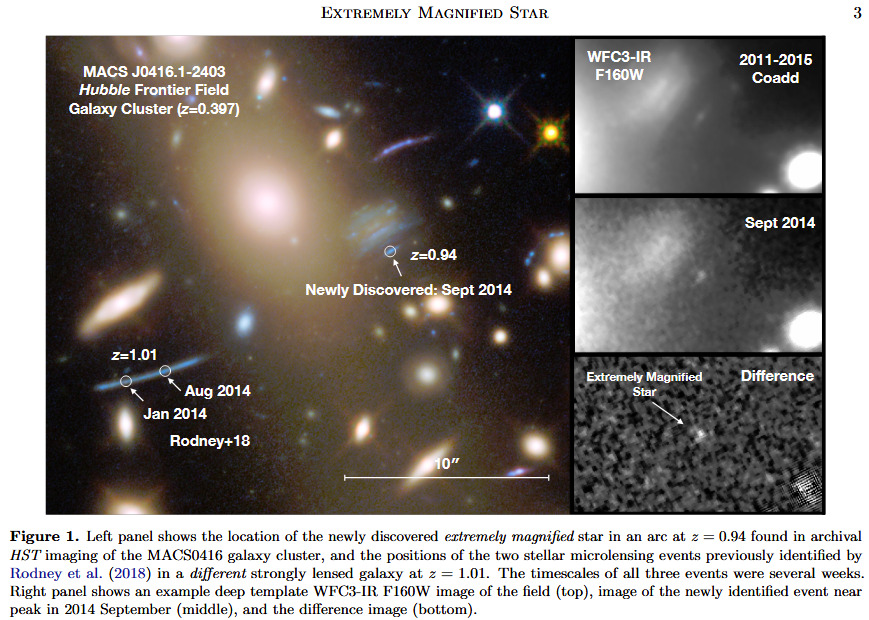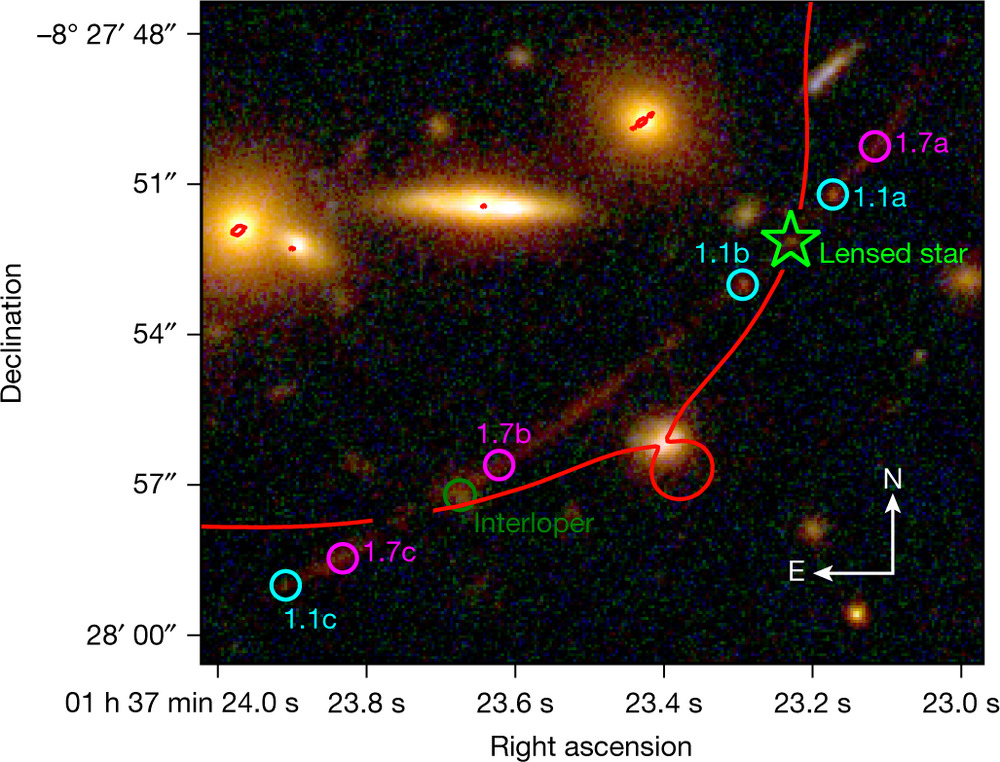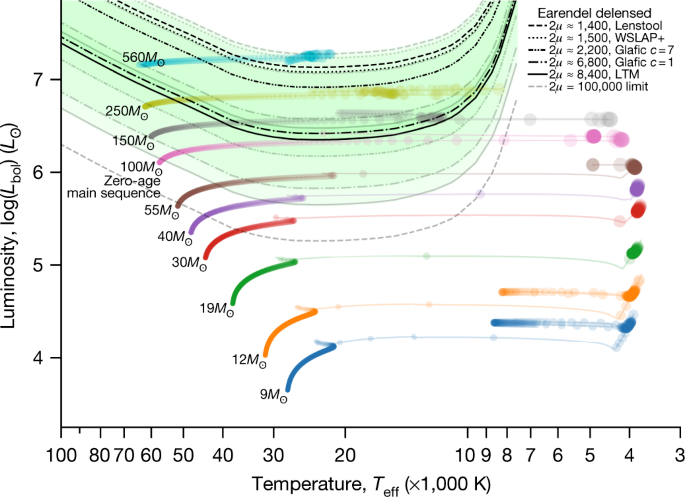Tau.Neutrino said:
Hubble spots most distant single star ever seen, near dawn of universe
Hubble has spotted the most distant single star ever seen, about 12.9 billion light-years from Earth. The light from this star was emitted not long after the Big Bang, and has been magnified by a foreground galaxy and stretched out by the expansion of the universe.
The star has been nicknamed Earendel,
Earendel’s redshift was 6.2, which is absolutely huge compared to Icarus’ redshift of just 1.5.
more…
Wow!
I can remember back to when the most distant galaxy seen had a redshift of less than 6.2.
The first quasar that far away was discovered in 2001 and the first galaxy that far away was discovered in 2002.
> Although whole galaxies and clusters have been seen at even greater distances, it’s much harder to make out individual stars so far away
No kidding.
The following image is from an earlier (photographed in 2014, discovered in 2018-9 in archival search) discovery of two distant stars (the nearer dubbed “Warhol”) at redshifts of 0.94 and 1.01. The nearer of the two is a blue supergiant. The single microlensing image faded over a period of two weeks.
https://arxiv.org/pdf/1902.05510.pdf

The following images are for the new star at redshift 6.2. Figures from the article in Nature.
The start has to be heavy.


